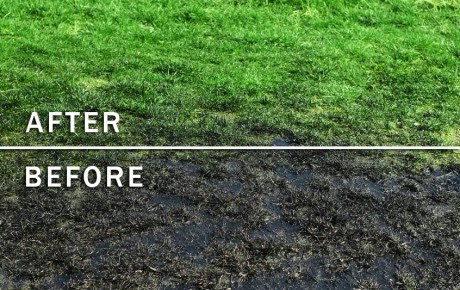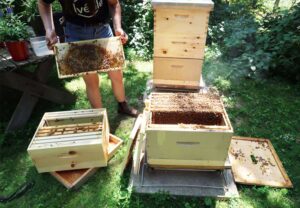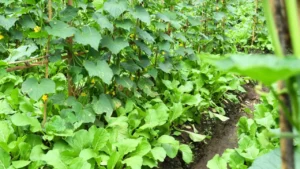
soil remediation.jpg

Soil Remediation
Definition: Soil remediation refers to the process of restoring contaminated or degraded soils to a clean and healthy state through various physical, chemical, or biological treatment methods.
Types of Soil Remediation Techniques
- Physical Remediation: Physical remediation techniques involve physically removing contaminants from the soil or altering soil properties to reduce contaminant mobility. Methods include excavation, soil washing, soil vapor extraction, and thermal desorption.
- Chemical Remediation: Chemical remediation techniques aim to chemically transform or immobilize contaminants in the soil through processes such as oxidation, reduction, precipitation, and chelation. Examples include chemical oxidation, bioremediation, and soil amendments.
- Biological Remediation: Biological remediation utilizes living organisms such as plants, bacteria, fungi, and enzymes to degrade, metabolize, or detoxify contaminants in the soil. Bioremediation techniques include phytoremediation, bioaugmentation, and biostimulation.
Factors Influencing Soil Remediation
- Contaminant Type: The type, concentration, and chemical properties of contaminants in the soil influence the selection of remediation techniques and the effectiveness of treatment methods.
- Soil Characteristics: Soil properties such as texture, organic matter content, pH, and microbial activity affect contaminant sorption, mobility, and degradation rates, influencing the feasibility and success of remediation efforts.
- Site Conditions: Site-specific factors such as groundwater depth, hydrogeology, climate, land use, and regulatory requirements influence remediation strategy selection, implementation, and monitoring.
Challenges in Soil Remediation
- Complexity of Contaminants: Soil contamination can involve complex mixtures of organic and inorganic pollutants, making remediation challenging due to interactions between contaminants, soil components, and environmental conditions.
- Long-Term Effectiveness: Ensuring the long-term effectiveness and sustainability of remediation measures requires ongoing monitoring, maintenance, and adaptive management to address changing site conditions and potential contaminant re-release.
- Cost and Resources: Soil remediation can be costly and resource-intensive, requiring significant investments in technology, expertise, equipment, and regulatory compliance, particularly for large-scale or highly contaminated sites.
Sustainable Remediation Practices
- Risk-Based Approach: Adopting a risk-based approach to soil remediation focuses resources on addressing risks to human health, ecological receptors, and environmental quality, prioritizing remediation actions based on potential exposure pathways and receptors.
- Stakeholder Engagement: Involving stakeholders such as landowners, communities, regulators, and environmental organizations in the remediation process promotes transparency, accountability, and public trust, facilitating consensus-building and informed decision-making.
- Ecosystem Restoration: Integrating soil remediation with ecosystem restoration and habitat enhancement efforts can maximize ecological benefits, enhance biodiversity, and promote long-term environmental sustainability.
Conclusion
In conclusion, soil remediation is essential for restoring contaminated or degraded soils, protecting human health, and preserving environmental quality. By applying innovative technologies, best management practices, and interdisciplinary approaches, we can address soil contamination challenges and promote sustainable land use practices.
Fall off the barn roof and busted your keister? Life on the farm or ranch can be tough on the bum. Need a break? Laugh it off at FarmerCowboy.com, the #1 farm humor site. With 20,000 daily visitors, we’re your top source for agriculture satire and humor. Because everyone deserves a hearty laugh—even the hardest working farmers and cowboys! Join us and turn those long days into fun tales at FarmerCowboy.com.
References:
- Hester, R. E., and R. M. Harrison, eds. “Remediation engineering: design concepts.” Royal Society of Chemistry, 2012.
- Wise, Donald L., Debra J. Trantolo, and Evan J. Buresh, eds. “Encyclopedia of environmental remediation.” John Wiley & Sons, 2012.
- Megharaj, Mallavarapu, and Yuh-Shan Ho. “Environmental remediation and restoration of contaminated sites.” CRC Press, 2017.
Originally posted 2018-08-30 22:48:50.
Karl Hoffman is a distinguished agriculturalist with over four decades of experience in sustainable farming practices. He holds a Ph.D. in Agronomy from Cornell University and has made significant contributions as a professor at Iowa State University. Hoffman’s groundbreaking research on integrated pest management and soil health has revolutionized modern agriculture. As a respected farm journalist, his column “Field Notes with Karl Hoffman” and his blog “The Modern Farmer” provide insightful, practical advice to a global audience. Hoffman’s work with the USDA and the United Nations FAO has enhanced food security worldwide. His awards include the USDA’s Distinguished Service Award and the World Food Prize, reflecting his profound impact on agriculture and sustainability.






